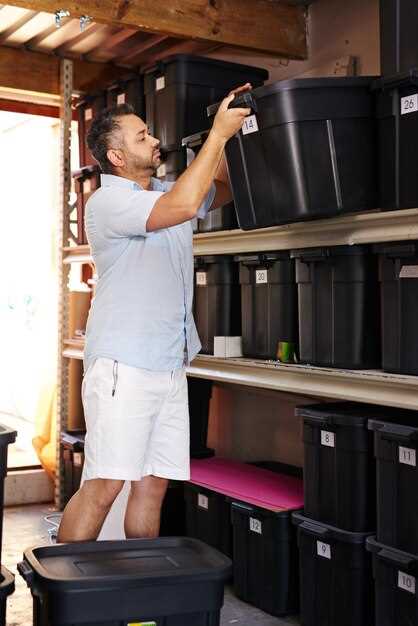
When it comes to preserving valuable items such as vintage cars, choosing the right storage option is crucial. Both DIY and professional storage solutions offer unique benefits, making it essential to evaluate which method best suits your needs. Each choice comes with its own set of advantages and challenges, particularly when it involves protecting your cherished possessions over time.
DIY storage options typically provide a cost-effective way to manage your space. Many enthusiasts prefer to craft their own storage systems, allowing for personal customization. Whether it’s creating a specialized garage environment or utilizing containers that fit specific needs, DIY solutions empower owners to tailor their setups. However, these options may require significant time and effort, and the quality of protection may vary based on the materials and techniques used.
On the other hand, professional storage services offer reliability and expertise. Facilities specializing in vintage car storage often have built-in climate control, security measures, and industry knowledge that can ensure maximum protection. These options are designed to safeguard your vehicles against environmental factors and potential damage, making them an appealing choice for those unwilling to compromise on the safety of their prized possessions. Ultimately, understanding the differences between DIY and professional storage options can help car enthusiasts make informed decisions that best align with their needs.
Assessing DIY Storage Solutions for Vintage Cars

When considering storage options for vintage cars, DIY solutions can offer a cost-effective and personalized approach. These options often allow enthusiasts to customize their storage space according to specific needs, but they require careful planning and execution to ensure the safety and preservation of these valuable vehicles.
One popular DIY storage solution is building a dedicated garage or workshop. This space can be designed to accommodate multiple cars while incorporating features that protect them from environmental factors. Proper insulation, ventilation, and climate control are crucial to prevent rust and damage from humidity and temperature fluctuations.
Another option is to create an outdoor carport or shelter. While this may be a more budget-friendly solution, it is essential to invest in quality materials that withstand the elements. Using durable tarps or covers can provide additional protection against rain, snow, and UV rays, but they may not be as effective as a fully enclosed structure.
For those with limited space, converting a portion of an existing shed or basement can serve as a practical storage solution. This approach can be particularly useful for vintage cars that are not in regular use. However, it is vital to ensure that the area is clean, dry, and free from pests that could harm the vehicle over time.
Finally, implementing storage accessories such as custom shelving or wall-mounted tools can optimize available space and keep the storage area organized. These enhancements not only make accessing the vehicles easier but also facilitate the maintenance process, contributing to the overall longevity of the vintage cars.
Evaluating Professional Storage Facilities for Vintage Vehicles
When considering the best options for storing vintage cars, evaluating professional storage facilities becomes crucial. These facilities often provide services specifically designed to cater to the unique needs of classic automobiles. The storage environment should typically feature climate control, ensuring that temperature and humidity levels remain consistent to prevent damage to the vehicle’s exterior and interior.
Security is another vital aspect of professional storage. Reputable facilities offer enhanced protection through surveillance systems, gated access, and sometimes on-site personnel. This level of security not only safeguards the cars from theft but also protects them from unforeseen damages.
In addition to basic storage, many professional facilities provide specialized services such as detailing, maintenance, and restoration. This can be a valuable option for car enthusiasts who wish to preserve their vehicle’s condition while it is being stored. Furthermore, many facilities also offer flexible storage terms, allowing owners to choose between short-term or long-term options based on their needs.
Accessibility is a key factor when selecting a storage facility. Owners should be able to visit their vehicles easily, whether to inspect, drive, or work on them. Evaluate the proximity of the storage location to your home or restoration shops, as this can significantly impact convenience.
Finally, it’s important to compare pricing structures among various facilities. While higher costs may correlate with better services and security, it’s essential to find a balance between price and the level of care your vintage vehicle requires. By thoroughly research and evaluating these various aspects, collectors can ensure they choose the right professional storage option for their prized cars.
Cost Analysis: DIY vs. Professional Options for Storing Vintage Cars

When it comes to storing vintage cars, cost is a significant factor that influences many enthusiasts’ decisions. Two primary options exist: DIY storage and professional storage services. Each choice has its financial implications that deserve careful examination.
DIY storage options typically involve considerable initial costs related to purchasing materials or renting space. For instance, building a custom garage or upgrading an existing structure may require investment in high-quality insulation, flooring, and security features. On average, these DIY projects can range from a few hundred to several thousand dollars, depending on size and functionality. Additionally, ongoing costs include utilities and maintenance, which may further impact the overall budget.
In contrast, professional storage options present a different financial landscape. These services often charge monthly fees that can vary widely based on the facility’s location, amenities, and level of security. Basic services may start around $100 per month, whereas high-end facilities with climate control and 24/7 security can exceed $500 monthly. While the upfront commitment may seem lower than a DIY approach, long-term costs can accumulate quickly.
Ultimately, the choice between DIY and professional storage options for vintage cars hinges on individual preferences and financial considerations. A DIY approach offers the potential for cost savings and customization, but it requires time, effort, and a willingness to manage ongoing expenses. Conversely, professional services provide convenience and peace of mind but can be more expensive over time. Evaluating these factors is essential for making an informed decision that aligns with both budget and passion for vintage automobiles.


